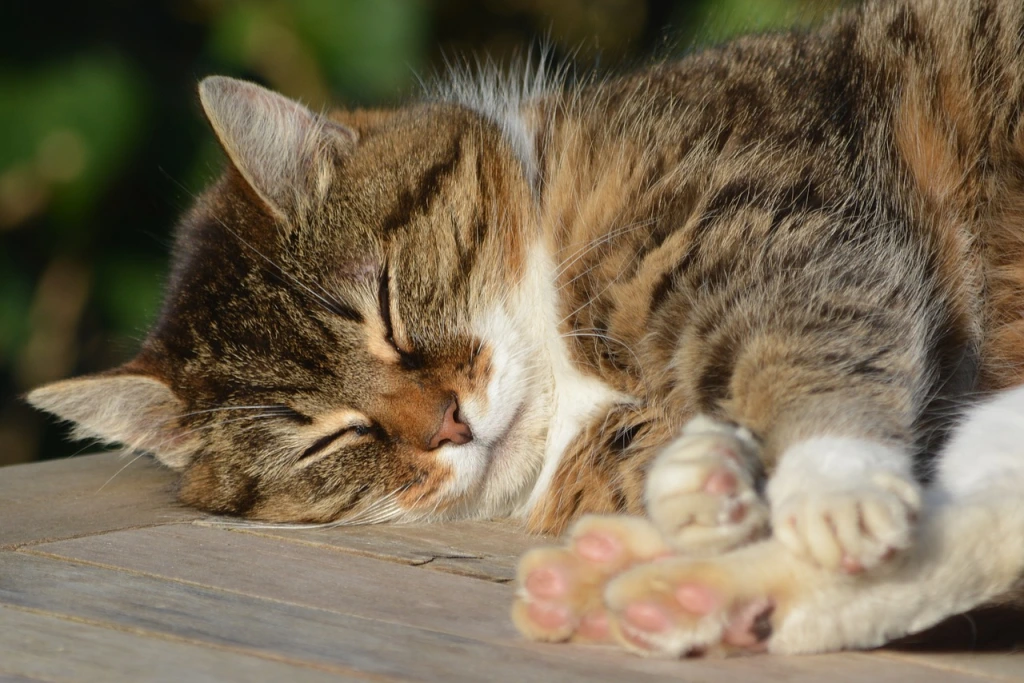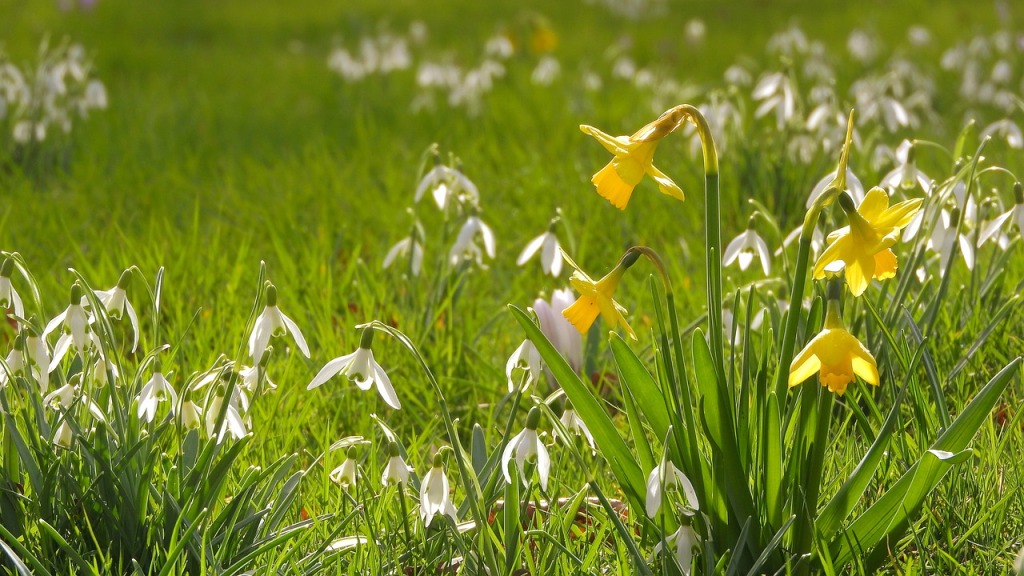A reflection on how service and sacrifice could turn into disillusionment, and the possibility of hope. A post for Tolkien Reading Day 2024.
Ode to the Horses: Tolkien Reading Day 2023 (2)
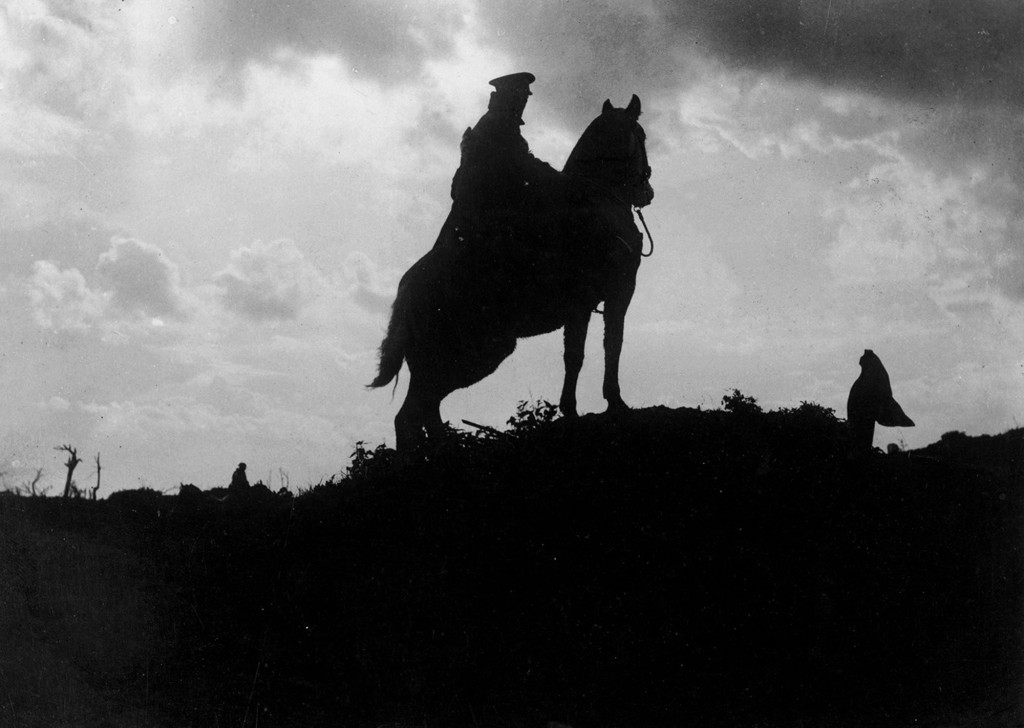
Horses and ponies appeared frequently in Middle-earth legendarium, and just like in any fantasy world or real world, characters could not achieve their goals without their presence. However, despite the fact that they were among the most important native animals of Middle-earth, horses here were mostly mentioned as means for the characters to reach their destinations. Even with the frequent mentions of notable horses and their deeds inform us that Tolkien had great appreciation toward these creatures beyond seeing them as beasts to ride.
Lanjutkan membaca “Ode to the Horses: Tolkien Reading Day 2023 (2)”In This Journey, Always Have Humility: Tolkien Reading Day 2023 (1)
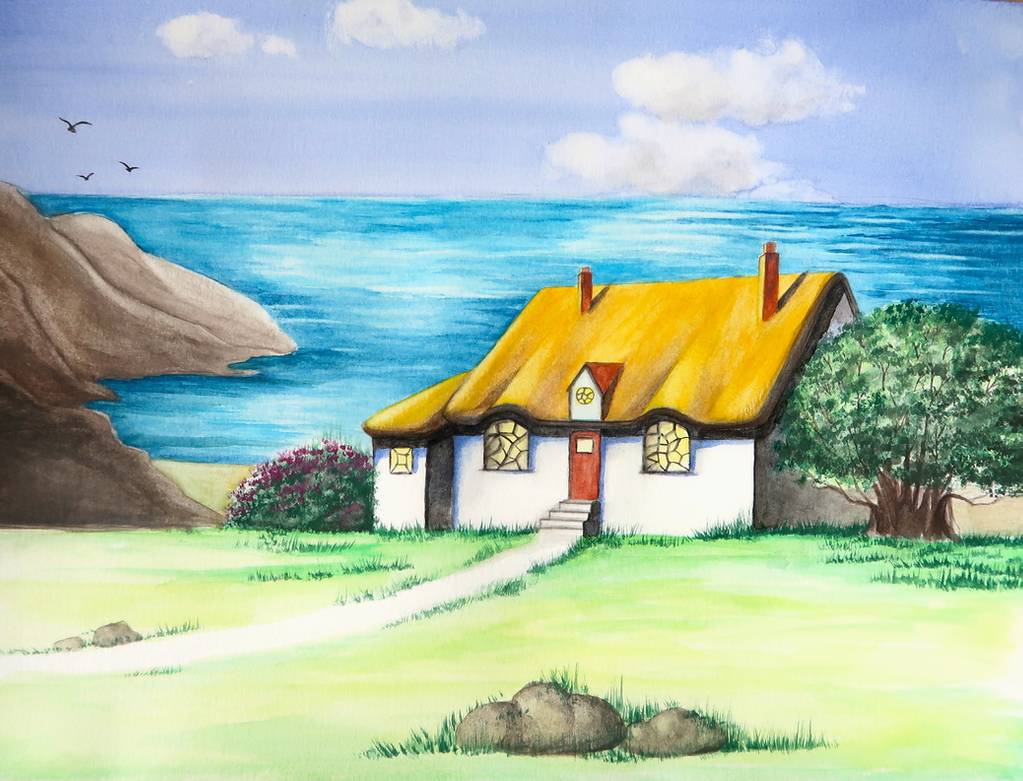
In The Cottage of Lost Play, the first chapter of The Book of Lost Tales part one, we met Eriol, a great mariner who traveled to the Elvish Isle of Tol Eressëa and gathered tales and history of its inhabitants. When he was looking for a lodging, he saw a peculiar house built on a cliffside, a tiny house called Cottage of the Lost Play. When he wondered how he could enter, the house seemed to perceive his mind, and said,
“Small is the dwelling, but smaller still are they that dwell here-for all who enter must be very small indeed, or of their own good wish become as very little folk even as they stand upon the threshold.”
Eriol responded by expressing his wish to experience the kindness of Lindo and Vairë, the hosts of the cottage, and humbly wishing to be small enough to walk past the door. His wish was granted as the house suddenly grew into great spaciousness, and he experienced more joy in the house than in his wanderings around the island (which had been joyful enough on their own). His humility and willingness to make himself smaller, not his physical prowess, were the ones that allowed him to enter this magical cottage.
Lanjutkan membaca “In This Journey, Always Have Humility: Tolkien Reading Day 2023 (1)”Sorrowful Love, Hopeful Love (Tolkien Reading Day 2022)
“For long years he (Amroth) had loved her, and taken no wife, since she would not wed with him. She loved him indeed, for he was beautiful even for one of the Eldar, and valiant and wise; but she was of the Silvan elves, and regretted the incoming of the Elves from the West, who (as she said) brought wars and destroyed the peace of old. She would speak only the Silvan tongue, even after it had fallen into disuse among the folk of Lorien; and she dwelt alone beside the falls of the river Nimrodel to which she gave her name.”
Unfinished Tales Part 2, Ch. 4: The History of Galadriel and Celeborn and of Amroth King of Lorien
Great love stories are tinged with sorrow. That’s one thing to notice when you read about the stories of lovers in Middle-earth legendarium. Even the legendary love tales, like between Beren and Lúthien, have this bittersweet quality that seeps into your heart, long after the story is supposed to end at the blissful “happily ever after”. Dig deeper into Tolkien’s “love stories”, and you will see characters languishing because of the lack of love, displaying the twisted form of “love”, or losing their loved ones. Many couples had their love unrequited, nipped at the bud, turned sour, or doomed.
Lanjutkan membaca “Sorrowful Love, Hopeful Love (Tolkien Reading Day 2022)”The Worlds of J. R. R. Tolkien: Inspirasi Middle-earth di Dunia Nyata (Ulasan Buku)
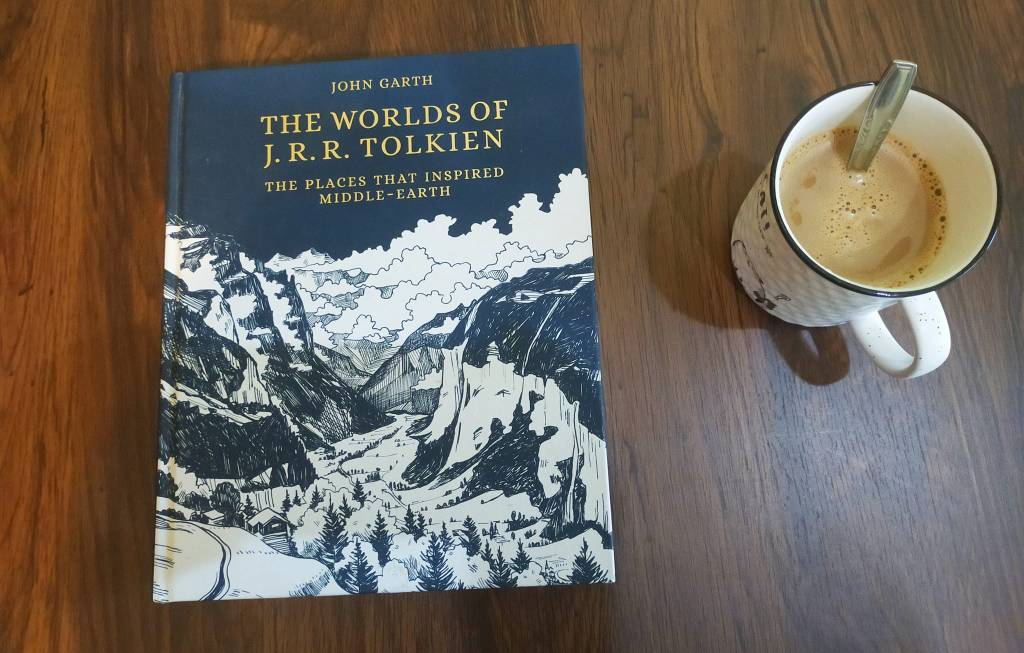
“Banyak pembaca sepertinya mengira Middle-earth berada di planet lain!”
The Letters of J. R. R. Tolkien, surat nomor 11, 14 Oktober 1958
John Garth mengawali bab pembuka The Worlds of J. R. R. Tolkien dengan kutipan surat Tolkien untuk Rhona Beare, tertanggal 14 Oktober 1958. Kutipan tersebut hanya awal dari penjelasan panjang tentang asal-usul kata Middle-earth; versi modern atau perubahan dari kata dalam bahasa kuno yang merujuk ke dunia yang dihuni Manusia. Menurutnya, kata middle (“tengah”) merujuk pada pemikiran bahwa dunia tersebut dikelilingi oleh Lautan, diapit negeri es di Utara dan api di Selatan. Dalam surat tersebut, Tolkien juga menambahkan kata Inggris Kuno dan Abad Pertengahan (middan-geard dan midden-erd), menegaskan bahwa Middle-earth terinspirasi oleh dunia nyata.
Lanjutkan membaca “The Worlds of J. R. R. Tolkien: Inspirasi Middle-earth di Dunia Nyata (Ulasan Buku)”The Worlds of J. R. R. Tolkien: Explore the Real Places That Inspired Middle-earth (Review)
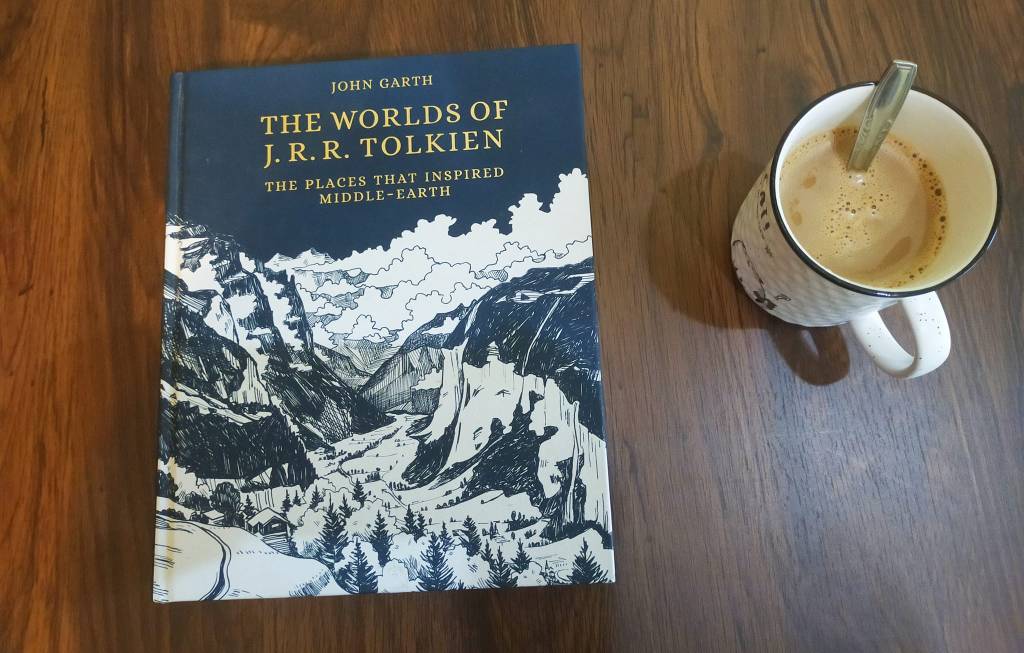
“Many reviewers seem to assume that Middle-earth is another planet!”
The Letters of J. R. R. Tolkien: Letter 211, 14 October 1958
John Garth aptly started the Introduction chapter of The Worlds of J. R. R. Tolkien with a quote from Tolkien’s letter to Rhona Beare, written on 14 October 1958. This line followed Tolkien’s explanation about the origin of Middle-earth; a modernization or alteration of an old word for the inhabited world of Men. The world “middle”, according to the same letter, is because the world is thought of vaguely as set amidst the encircling Seas between ice of the North and the fire of the South. Tolkien also added the Old English and Medieval English versions of the word “middle” (middan-geard, midden-erd), further emphasizing his notion that Middle-earth is based on his own world.
Lanjutkan membaca “The Worlds of J. R. R. Tolkien: Explore the Real Places That Inspired Middle-earth (Review)”On Tolkien’s Quaint Poem about a Sleeping Cat
“I fear that to me Siamese cats belong to the fauna of Mordor….”
Tolkien’s letter to Allen & Unwin, 16 October 1959 (Letter 219)
The above quote from Tolkien’s reply to a cat breeder, who was looking for a name for her Siamese cat, seems to indicate Tolkien’s general attitude toward cats. While he never explicitly stated an actual disdain against cats, the way he treated felines in Middle-earth legendarium seems to indicate otherwise. One can only look at his early version of Sauron, who he dubbed “Tevildo, the Prince of Cats.” Described as an evil fay with a gold collar that becomes the source of his power, his name is said to be derived from tefe, a Quenya root which means “hate/hatred.” In The Tale of Tinúviel, one of the early versions of the story of Beren and Lúthien, Beren was forced to work in Tevildo’s kitchen by Melkor. Tevildo is also assisted by several other evil cats: Oikeroi, Umuiyan, and Miaulë. Queen Berúthiel and her cats are also depicted in sinister way, associated with winter, shapeless eerie statues, bleakness, and fear.
Lanjutkan membaca “On Tolkien’s Quaint Poem about a Sleeping Cat”Review: Laughter in Middle-earth: Humour in and Around the Works of J. R. R. Tolkien
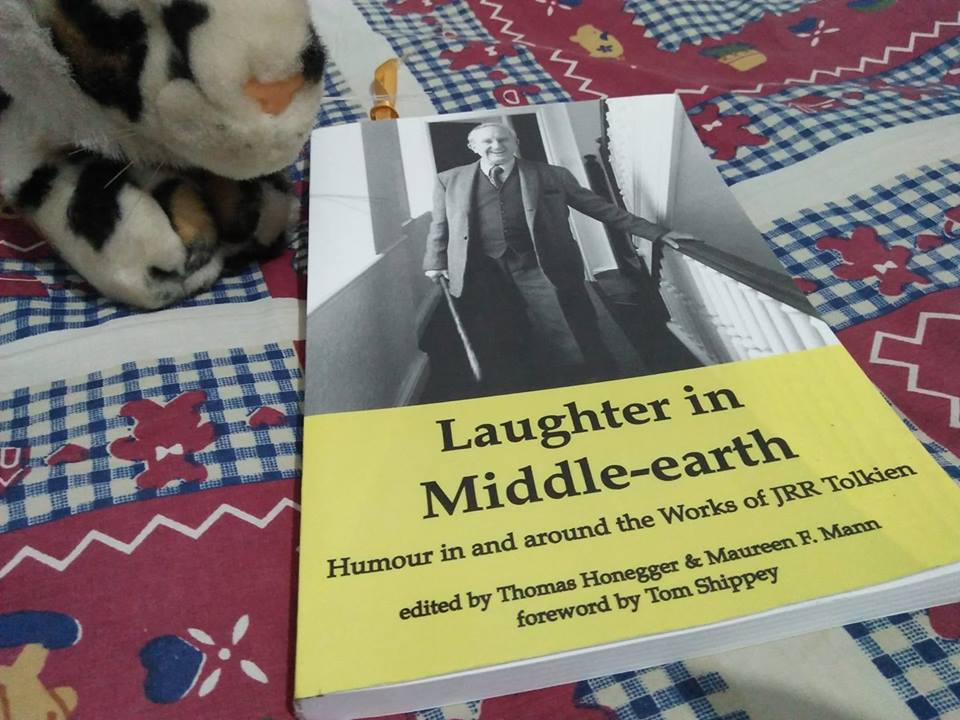
Anyone without the slightest idea of how J. R. R. Tolkien was like in real life perhaps would assume that he was a stiff, serious professor-type; well-read and charming enough, but not exactly a humorous one, judging from his photos. This, of course, was a wrong assessment, since Tolkien was known for being quite a jolly figure, fond of laughter and even silly jokes. This was a person who threw sugar cubes to people’s hats from teahouse balconies with his date, went to parties dressed as a polar bear, and irritated his neighbors by dressing up as Anglo-Saxon warrior and chased them down the street.
Lanjutkan membaca “Review: Laughter in Middle-earth: Humour in and Around the Works of J. R. R. Tolkien”Niphredil, Snowdrops: the Blooms of Courage and Hope
The grass was studded with small golden flowers…. Among them, nodding on slender stalks, were other flowers, white and palest green: they glimmered as a mist amid the rich hue of the grass…. “Behold! You are come to Cerin Amroth…. Here ever bloom the winter flowers in the unfading grass: the yellow elanor, and the pale niphredil.”
J. R. R. Tolkien: The Lord of the Rings: The Fellowship of the Ring, Book 2, Chapter 6: Lothlórien
Following the theme of Courage and Hope in Tolkien Reading Day 2021, I found myself reverting from the grand ideas, preferring to peer at the smaller, humbler things that are also parts of Middle-earth legendarium. Just like how the home-loving Hobbits turned into unexpected heroes in Tolkien’s stories, the presence of small, seemingly insignificant objects like flowers symbolized grander meaning than their humble appearances. One that received meaningful treatments in Middle-earth legendarium is niphredil, a small white flower that first grew in the magically hidden land of Doriath, and could be found among the golden trees of Lothlórien.
Lanjutkan membaca “Niphredil, Snowdrops: the Blooms of Courage and Hope”The Sea-Bell (Frodos Dreme): Puisi Tolkien tentang Laut, Ilusi, dan Rasa Terasing
The Lord of the Rings memuat lebih dari 60 puisi, namun mereka bukan satu-satunya puisi karya Tolkien. Sejak tahun 1910, Tolkien telah menulis puisi dengan beragam tema, seperti mimpi, laut, dunia “faerie“, rasa kehilangan, hingga keterasingan. The Sea-Bell adalah satu di antara beberapa puisinya yang bernada muram walau masih mengandung elemen mimpi dan dunia dongeng yang kental. Bahkan jika Anda hanya membaca karya populer seperti The Hobbit dan The Lord of the Rings, Anda tidak akan kesulitan menemukan kemiripan tema serta atmosfer yang mewarnai karya-karya Tolkien.
Lanjutkan membaca “The Sea-Bell (Frodos Dreme): Puisi Tolkien tentang Laut, Ilusi, dan Rasa Terasing”Simbelmynë, Frangipani: Reflection on the Graveyard Flowers
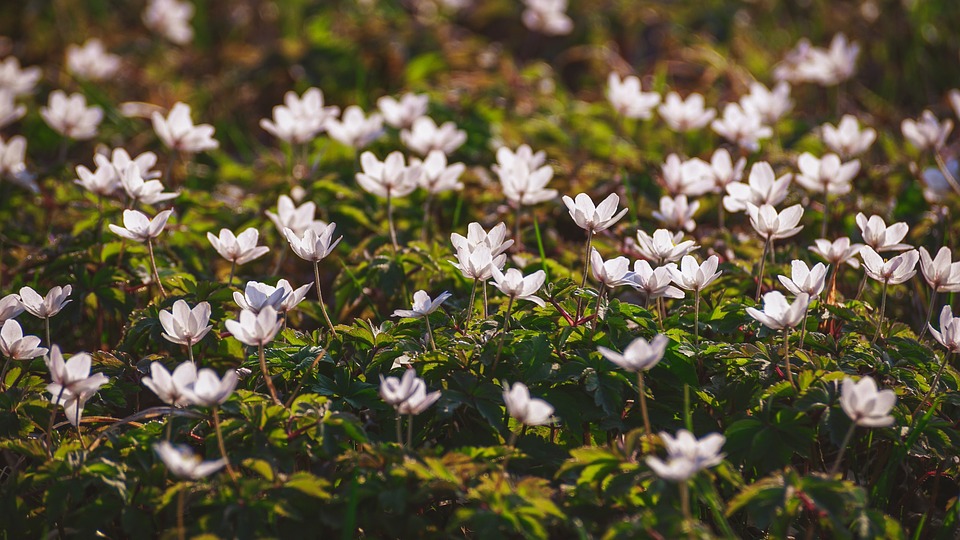
“Look!” said Gandalf. “How fair are the bright eyes in the grass! Evermind they are called, simbelmynë in this land of Men, for they blossom in all the seasons of the year, and grow where dead men rest. Behold! we are come to the great barrows where the sires of Théoden sleep.”
– The Lord of the Rings: The Two Towers: Book 3, Chapter 6: The King of the Golden Hall
Nothing is too small to contribute to the world of J. R. R. Tolkien, and that includes the presence of tiny, delicate flowers. From the golden, star-like elanor to pure white niphredil, these small flowers evoke memories and feelings, enough to spur the characters to sing a song, deliver a story deeply-buried in memory, or confess about the deepest sentiment in their heart at the moment. One of the most memorable ones is perhaps simbelmynë, the white, delicate flowers that spring like countless stars amid the turf of burial mounds.
Lanjutkan membaca “Simbelmynë, Frangipani: Reflection on the Graveyard Flowers”

